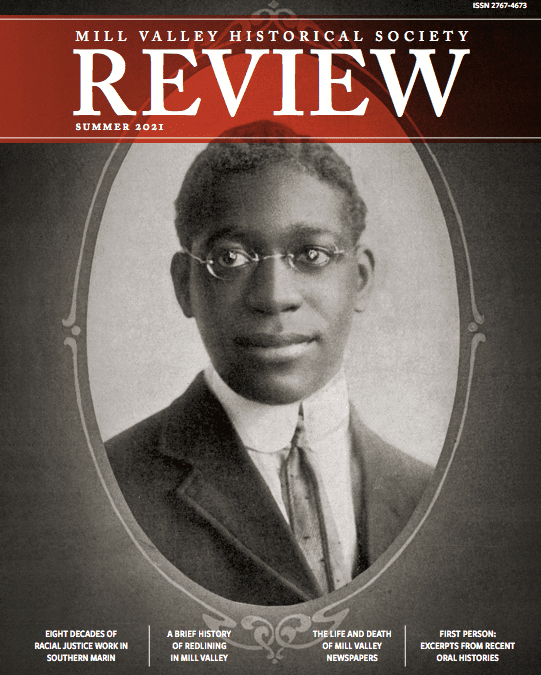The immediate wake of the George Floyd murder – and the endless tragedies for Black Americans that preceded them – sparked such a stark, galvanizing global moment of protest in 2020, including in Mill Valley, that it was easy to view it in a vacuum.
But the folks that run the Mill Valley Historical Society, and particularly those who create the annual MVHS Review, know all too well that nothing exists in a vacuum. Their 32-page, 2021 edition looks at the long overdue racial reckoning in Mill Valley, Marin and beyond in 2020, and puts it within the broader context of history.
“We hope that this issue will stir debate, empathy, and understanding, and contribute valuable historical context for local policy makers and the broader community in ongoing efforts to bring about greater justice and equity,” MVHS President Eric Macris wrote of the issue, which was the brainchild of editor Abby Wasserman.
The issue’s theme is diversity: “how racial diversity was slow to come to Mill Valley, how it was blocked, and how efforts to fight racism were mounted,” Wasserman writes. “As Mill Valley awakens to its past and acknowledges how men, women, and children have been deprived of inclusion because of their skin color, we also acknowledge that some in this community worked hard for social justice. We look at how racism affects individuals and we are inspired by those who championed inclusion.”
The issue is full of engaging oral histories, profiles of figures like William Patterson, Tam High’s first Black graduate, a look at the creation of Marin City as the then-best integrated shipyard on the West Coast, and the history of redlining and racial covenants in Marin, among others.
But perhaps the most compelling of all of the engaging pieces is a deep dive into the decades-long efforts – with very mixed results – toward diversity, equity and inclusion in Marin over the past many decades, particularly the work that long preceded the City of Mill Valley’s Diversity, Equity & Inclusion Task Force, an effort that generated a 92-page report that serves as something of a blueprint for the road ahead. That group, which now seeks to influence the city as an independent entity, is called MVFREE.
The piece on Marin’s history of efforts to seek racial justice, by Natalie Snoyman, the Supervising Archivist at the Lucretia Little History Room in the Mill Valley Public Library, chronicles the local, county and regional efforts to make progress on racial equity. That work came form organizations like the Marin County Council for Civic Unity, as well as CORE, the Committee for Fair Play, the Marin Chapter of the Congress of Racial Equality (CORE), the latter of which organized protests against two realty companies in Mill Valley in response to reports of racial discrimination.
In later years, the Marin County Human Rights Commission spearheaded work on equity, but saw its budget was slashed due to austerity measures, with the commission referred to as a “nonessential service.” Mill Valley established its own human rights commissions between 1969 and 1978 but “consistently faced hardships,” and its duties were transferred to the Parks and Recreation Commission. Gerald Hood said at the time: “When you [wanted] to get rid of something, that’s what you did. One of the things that you didn’t want to have happen was a mob of people coming into the council and raising hell. If you [made that move], you could say, ‘It’s still here. We’re transferring things around.’ It was to kill it, to make a long story short.”
The Mill Valley Historical Society, MVFREE and the City of Mill Valley appear to be vigilant about making sure continued efforts towards addressing systemic racial inequity don’t meet the same fate.


